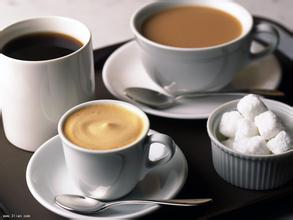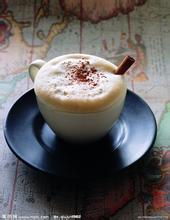Medium mellow Ecuadorian Coffee Flavor Manor characteristics of Santa Cruz Manor
West coast: including coastal plains and foothills, high in the east and low in the west, generally below 200 meters above sea level, with some hills and low mountains at an altitude of 600 to 700 meters. Belongs to the tropical rain forest climate, the southernmost end begins to transition to the savanna climate. The average annual precipitation decreases from more than 3000 mm to about 500mm from north to south. The Cologne Islands (Galapagos Islands) is located in the Pacific Ocean, about 900km east from the continental coast, covering an area of 7800 square kilometers, including 7 large islands and about 70 small islands. The names of the provinces composed entirely of volcanic cones and lava are as follows: Piccha, Asuai, Boliwar, Canyar, Karch, Kodoto Paxi, Chimborazo, El Oro, Esmeraldas, Guayas, Inbabula, Loha, Los Rios, Manawi, Zamora-Cippe, Napo, Morona-Santiago, Pastasa, Tungurava, Galapagos, The ports of Sugumbios and Francesco de Orellana Guayaquil are the largest seaports in Ecuador. It faces the Pacific Ocean and backs against Mount Santa Ana. The nearby island of Pune serves as a natural barrier to protect the harbour from storms. There is a wharf in the south, which is more than 900 meters long. Ships from different parts of the world flying various flags are moored in the harbor. The port railway leads to the capital Quito, and highways connect Quito with other cities in the country. Bananas, cocoa, coffee, cotton and other products from all over the country are collected and distributed here. Guayaquil has also played an important role in the history of friendly exchanges between the peoples of China and Ecuador. As early as the 18th century, Chinese clothing, textiles and other goods were shipped to Ecuadorian cities through Guayaquil. In August 1978, the Chinese cargo ship Jialing River arrived here for the first time. Most of the import and export goods of the two countries are transhipped through Guayaquil.
The area of cocoa production in the world is concentrated in the tropics with the equator as the center, the latitude of the Tropic of Cancer is no more than 20 degrees and the elevation is between 30m and 300m. Cocoa has a high nutritional value, and its main components are cocoa butter, theobromine and caffeine, that is, carbon water compounds, fat, protein and minerals magnesium, potassium, alkaloids, scutelline and so on. Cocoa beans are the main raw material for making chocolate, as well as semi-finished and finished products. Such as chopped cocoa, cocoa pulp, cocoa liquid or juice, cocoa butter, cocoa cake and cocoa powder, the rest of cocoa can also be used as raw materials for cosmetics, animal feed, wine and so on. Ecuador is also one of the major cocoa bean producing areas in the world. Although the production is not very large, 70% of the world's aromatic cocoa beans come from Ecuador. Ecuador is one of the earliest countries to grow, produce and export cocoa, as well as one of the birthplaces of cocoa cultivation and production. Unlike other major cocoa growing, producing and exporting countries in the world, Ecuadorian cocoa has unparalleled delicacy and floral aroma, and its output and exports account for 70% of the world's high-quality aromatic cocoa exports. it is the largest supplier of high-quality aromatic cocoa in the world. Ecuadorian cocoa is an indispensable raw material for high-end high-quality chocolate in the international market. Between Colombia and Peru, Ecuador, which passes through the equator, is one of the few countries in South America that produces both Arabica and robastian coffee.
In fact, Ecuador means "equator" in Spanish. Due to the use of old-fashioned traditional harvesting and handling methods, Ecuadorian coffee is not listed as a boutique coffee, so it is generally rarely seen.
Ecuador faces the Pacific Ocean, and near the equator, about 900km off its west coast, near the equator at 90 degrees west longitude, there is also a dependency of the Galapagos Islands (Galapagos Island), also known as Cologne, which produces the famous Galapagos coffee. In order to protect the natural ecology, the Ecuadorian government has designated the archipelago as a national park and banned the use of chemical fertilizers, pesticides and other chemicals, so coffee in the Galapagos Islands is recognized as organic coffee.
Galapagos Islands coffee flavor is more balanced and neutral, moderately mellow, with a little obvious but pleasant acidity, with a special aroma. However, because it is seldom seen on the market, not many people talk about this coffee.

Important Notice :
前街咖啡 FrontStreet Coffee has moved to new addredd:
FrontStreet Coffee Address: 315,Donghua East Road,GuangZhou
Tel:020 38364473
- Prev

Introduction to the characteristics of Panamanian Jade Manor Coffee Flavor
In 1903, after defeating Britain and France, the United States signed a treaty with the Colombian government to build and lease canals, which the Colombian Congress refused to ratify. [5] on November 3, 1903, American troops landed in Panama, instigating Panama to become independent from Colombia and establish the Republic of Panama. On November 18 of the same year, the United States acquired the permanent monopoly right to build and operate the canal and the permanent use of the canal zone.
- Next

Introduction to the characteristics of coffee flavor and taste production area of pure taste in Atlanta Manor, Jamaica
Columbus came to Jamaica in 1494, and in 1509 Spain declared Jamaica its colony and renamed it Santiago. Spain's slave policy towards the indigenous peoples led to the extinction of the Arawaks on the island as a result of war, disease and enslavement. In order to replenish the labor force, Spain began to sell slaves from Africa to Jamaica since 1517, causing blacks to gradually become teeth.
Related
- Does Rose Summer choose Blue, Green or Red? Detailed explanation of Rose Summer Coffee plots and Classification in Panamanian Jade Manor
- What is the difference between the origin, producing area, processing plant, cooperative and manor of coffee beans?
- How fine does the espresso powder fit? how to grind the espresso?
- Sca coffee roasting degree color card coffee roasting degree 8 roasting color values what do you mean?
- The practice of lattes: how to make lattes at home
- Introduction to Indonesian Fine Coffee beans-- Java Coffee producing area of Indonesian Arabica Coffee
- How much will the flavor of light and medium roasted rose summer be expressed? What baking level is rose summer suitable for?
- Introduction to the characteristics of washing, sun-drying or wet-planing coffee commonly used in Mantenin, Indonesia
- Price characteristics of Arabica Coffee Bean Starbucks introduction to Manning Coffee Bean Taste producing area Variety Manor
- What is the authentic Yega flavor? What are the flavor characteristics of the really excellent Yejasuffi coffee beans?

